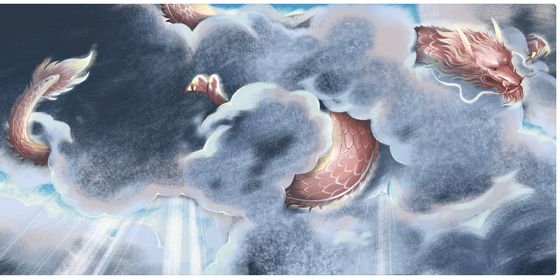Rivers of mercury, pearl-studded ceilings—the contents of the unopened burial chamber of Qin Shi Huang continue to baffle archaeologists
As many as 700,000 men dug deep to construct a vast underground city, a palace filled with priceless treasure at the center. Inside, they built a burial chamber with a soaring ceiling resembling the night sky and a floor modeled after the landmarks of the empire, complete with rivers of flowing mercury. Crossbows were planted to fire at unsuspecting grave robbers. Once completed, hundreds of concubines and craftsmen were sealed inside the towering mound of earth to make sure they took the secrets of what lay inside to the grave.
What reads like a passage from an adventure novel is actually a description of the burial of China’s first emperor, Qin Shi Huang (秦始皇), written by historian Sima Qian (司马迁) about a century after the emperor’s death in 210 BCE. Qin Shi Huang, known for uniting the seven Chinese feudal kingdoms at the time into one empire, ascended the throne of the Qin kingdom in 246 BCE at the age of 13. But it is his tomb, rather than his rule, that has proved most perplexing to archaeologists since. No one has been inside the burial chamber since its rediscovery in the 1970s; what lies within remains one of Chinese history’s most tantalizing mysteries.
Construction of Qin Shi Huang’s giant mausoleum began shortly after he took the throne and established the Qin dynasty (221 – 206 BCE). According to Sima Qian, hundreds of thousands of men conscripted from all over the empire worked together to finish the massive underground burial complex. The emperor was laid to rest there after his death at the age of 39.
Although Sima Qian’s account has been known for centuries, the exact location of the tomb was unknown until 1974. In a particularly dry March that year, Yang Zhifa and a group of fellow farmers from Lintong county in Shaanxi province ventured out into the scrubby plains at the foot of Mount Li, 35 kilometers east of the provincial capital Xi’an. Their mission was to dig a well for their cooperative farm, but the men found something much more valuable instead: at a depth of around three meters, they first struck hardened red earth, then terracotta fragments, then pieces of bronze ware. The farmers didn’t think much of it at the time, but took their findings to the local museum anyway—the rest is history.
They had found the now world-famous terracotta army. The numbers are staggering: Of the estimated 8,000 terracotta warriors, chariots, and horses buried with the emperor, battle-ready to protect him in the afterlife, only about a quarter have been unearthed so far. The largest pit, No. 1, is roughly the size of two soccer fields; one can only begin to imagine what the endless rows of intricately crafted, life-sized terracotta soldiers, archers, horses, and chariots must have looked like in their original paintwork, which mostly disintegrated due to exposure to the elements and early excavation errors. Several smaller pits have been found as well: some with civilian terracotta figures such as musicians and acrobats, others with precious metal artifacts including two imperial bronze chariots and 46 bronze birds.













